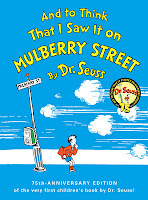“I’ll take you to see Mulberry Street,” said Guy McLain, the director of the Museum of Springfield History.
He meant the real Mulberry Street, the one that inspired the first of Dr. Seuss’ 44 children’s books.
I started to think what I might see on Mulberry Street. Truffula trees? Gerald McGrew? Gertrude McFuzz? A Once-ler or two?
That’s the thing about Dr. Seuss. He gets in your head and stays there...
Springfield today is mostly poor and run-down, but on a tour, Mr. McLain, the historian, conjured a city from a century ago that was one of the country’s great manufacturing centers. The Indian company built the first motorcycles here, the ones Dr. Seuss drew for the policeman who escorted Marco’s parade down Mulberry Street. The rifles the hunters used to capture Thidwick the big-hearted moose were made at the Springfield Armory and used by American troops in World War I.
The earliest motorized cars and tractors were built in Springfield. Everett Barney, who donated miles of wooded land to the city for Forest Park — where Ted Geisel and his friends played as children — became rich by inventing clip-on ice skates and manufacturing them here.
Anything must have seemed possible and inventable in the Springfield where Dr. Seuss grew up.
A web-based destination for aggregated news and commentary related to public school education in Kentucky and related topics.
Monday, January 30, 2012
Mulberry Street May Fade, but ‘Mulberry Street’ Shines On
This from the NY Times:
Labels:
Dr Seuss
Subscribe to:
Post Comments (Atom)

No comments:
Post a Comment